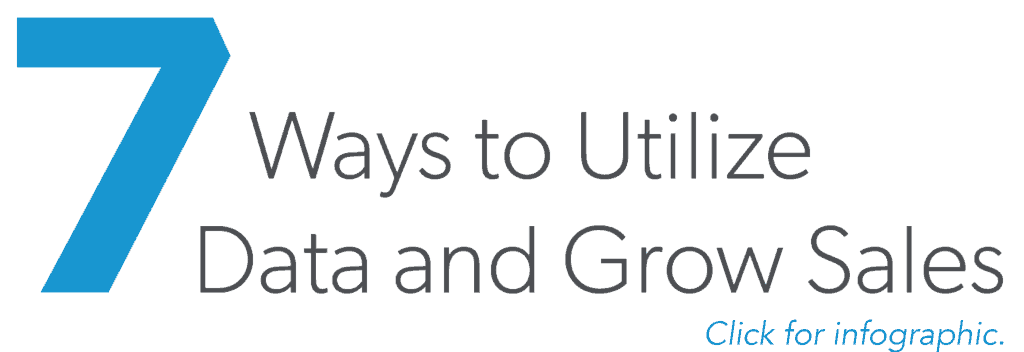Compiling comprehensive data from internal and external resources (like SiriusDecisions) provides an opportunity to maximize conversion rates, grow new markets, launch new products, and leverage your marketing dollars. Comparing that research data to your internal data (if you have it) builds clarity on a much higher level, as well. Additionally, it helps you prioritize what you need to focus on while building your plan and alignment.
When it comes to accumulating customer data, most companies employ a customer relationship management (CRM) system. Your CRM may be full of accounts, but without the correct company and persona details, it doesn’t do you much good. How well do you know your current customers? Have you profiled each and every one of your channel partners or end users? We’re sure your sales team knows your top 20% well, but what could a deep dive into your entire audience tell you?
Leverage Data to Grow Sales
- Identify untapped markets by calling and profiling each of your customers. You may have end users purchasing your product or service for solutions not in your current value proposition.
- Customer profiles and segments help sales and marketing leaders prioritize efforts. Build a profile scorecard for each customer.
- While profiling, score your accounts and partners based on historical behaviors and, more importantly,
- After scoring your accounts and partners, tier them into A-B-C buckets. Then, schedule a follow-up cadence with your sales team by utilizing focused marketing campaigns. Take advantage of growth opportunities by spending more time on accounts with growth potential.
- Marketing can then target customer segments with personalized content and campaigns.
- From an outbound sales effort perspective, calling old data lists reduces connect rates and increases sales cost. Using the right sales enablement tools (e.g., ZoomInfo, Data.com, InsideSales.com, etc.) and spending time collecting updated contact information increases productivity and optimizes sales expense.
- Compiling historical data to identify the best time to connect increases sales representative productivity, efficiency, time to close, and speed to revenue.
- Debriefs from failed sales deals or marketing campaigns give you data on lessons learned for future efforts.
- Take a look at the sales funnel from the past year or two. At which point in your sales funnel were deals lost? Does your sales team need further value proposition training to overcome that constraint, and how can marketing help address that specific pain point?
- Many organizations have several data portals. Marketing may be tracking a set of data while sales is using a CRM tool to compile other information. Integrating data from existing tools (marketing, email, telephony, CRM system) allows for more accurate predictions and forecasting.
These efforts to grow sales take time and resources, but in the end, pay off in big ways. You will be able to reach your big revenue targets, while optimizing expense. MarketSource can even handle it all for you. Our experts work with you to define your challenges and design a turnkey solution that produces results. Learn about our assessment process and contact us today.

![CRM[1] grow sales](https://www.marketsource.com/wp-content/uploads/2017/03/CRM1.jpg)